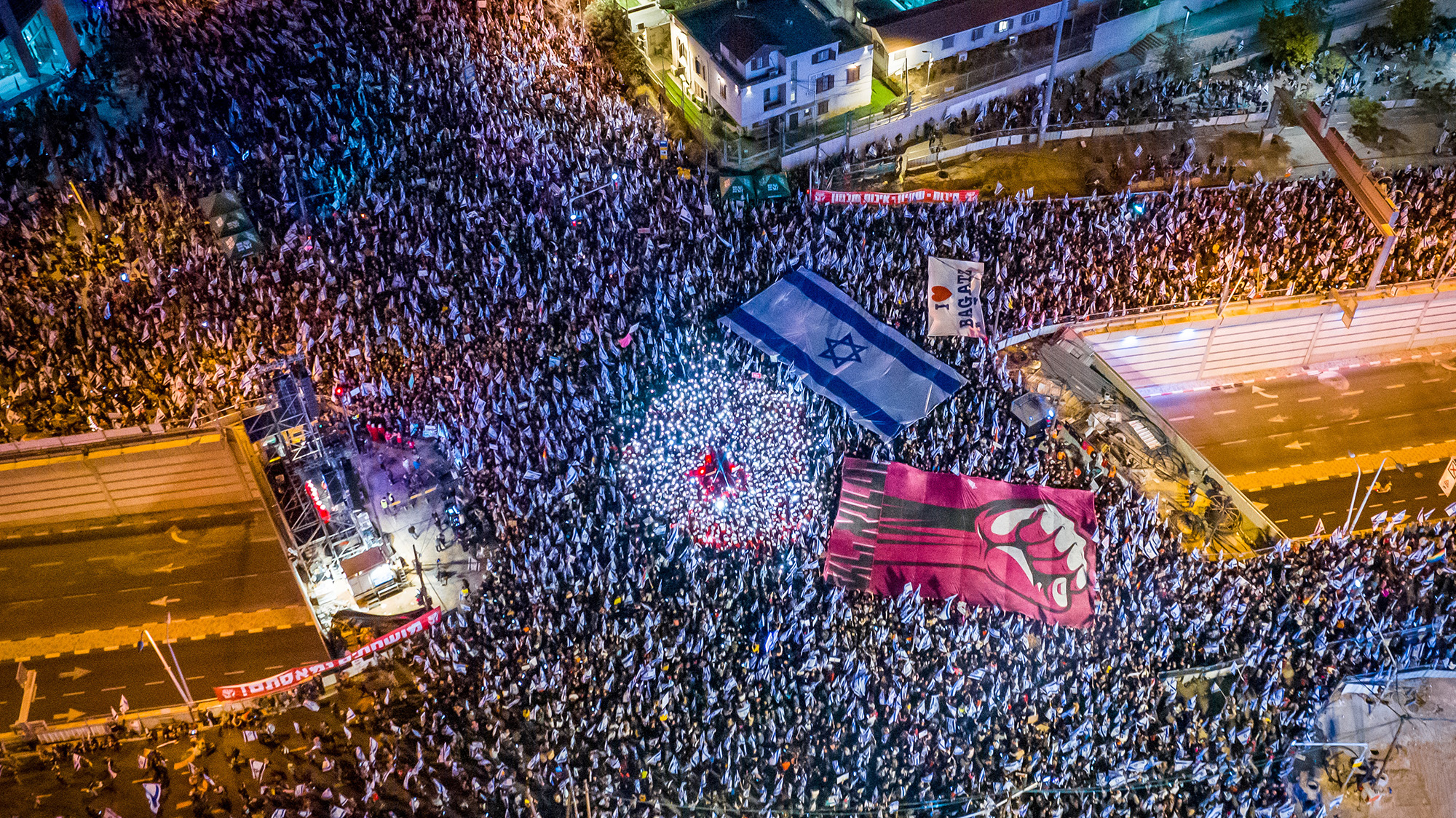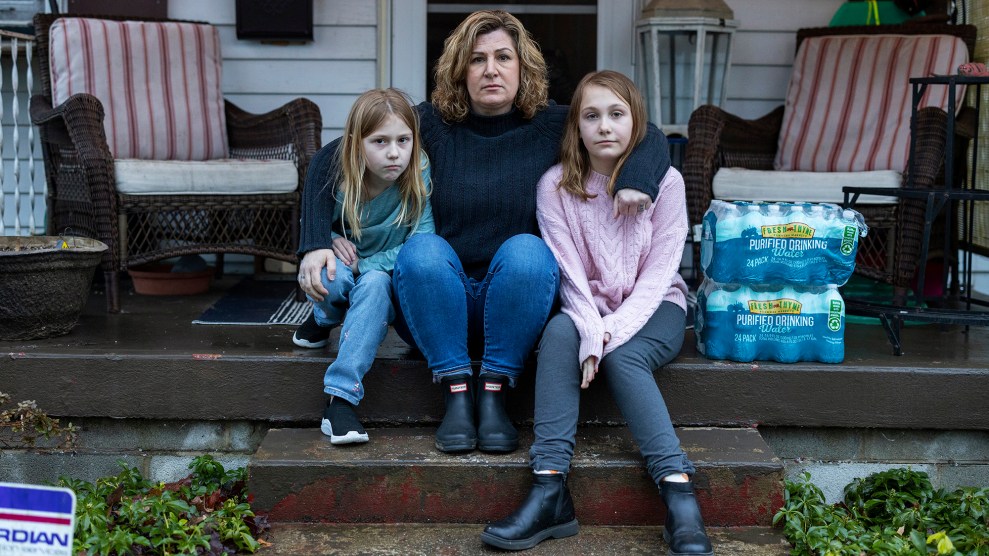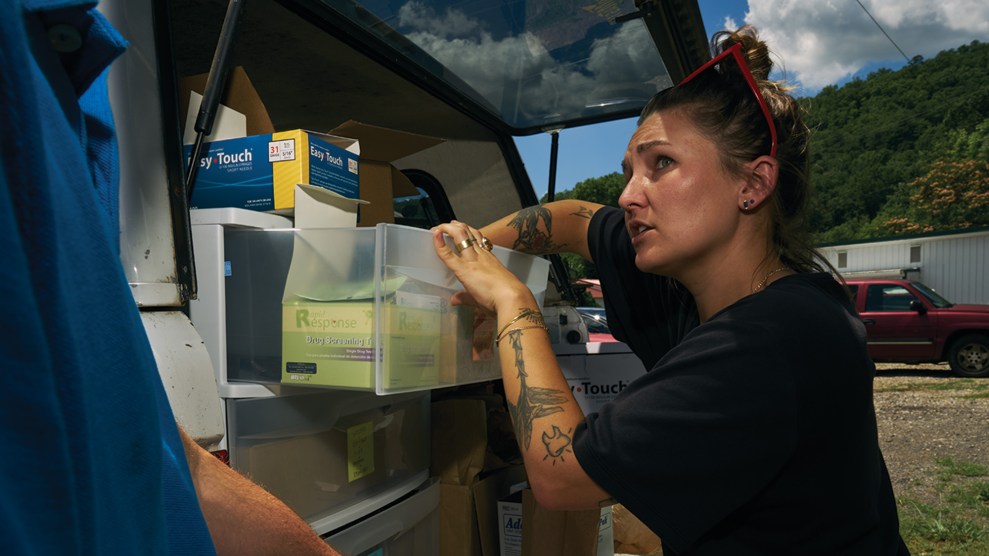Since late January, hundreds of thousands of Israelis have been loudly protesting an impending judicial overhaul by the nation’s new right-wing government. The most controversial part of the proposal gives the Knesset, Israeli’s parliament, the power to overrule supreme court decisions with a simple majority vote, which means the nation’s top court would be unable to strike down objectionable laws. It would effectively, as one Israeli news report put it, “neuter” the court.
Opponents say the changes, if allowed, will “endanger the entire legal system” and cement the power grip of the ruling coalition led by Prime Minister Benjamin Netanyahu, who faces a corruption charge. (The Knesset already has approved another rule stating that a prime minister may only be removed from office for physical or mental unfitness.) Since the changes were proposed, Israelis have taken to the streets en masse to register their displeasure.
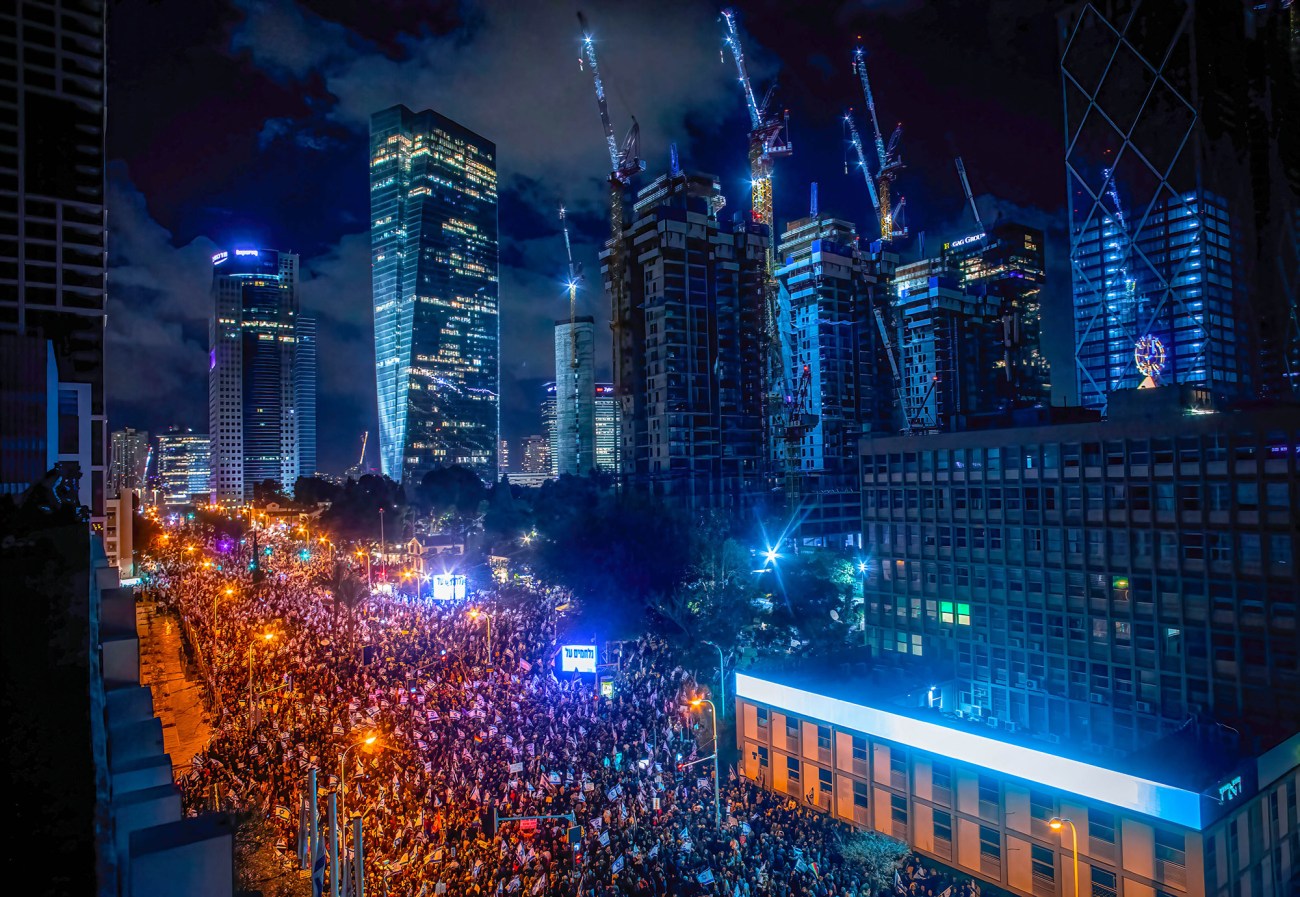
Tel Aviv on February 4.
Eyal Warshavsky/SOPA Images/Zuma

Protesters carry a huge Israeli flag on February 18.
Eyal Warshavsky/SOPA Images/Zuma

Mounted police in Tel Aviv confront a demonstrator on March 1.
Oded Balilty/AP
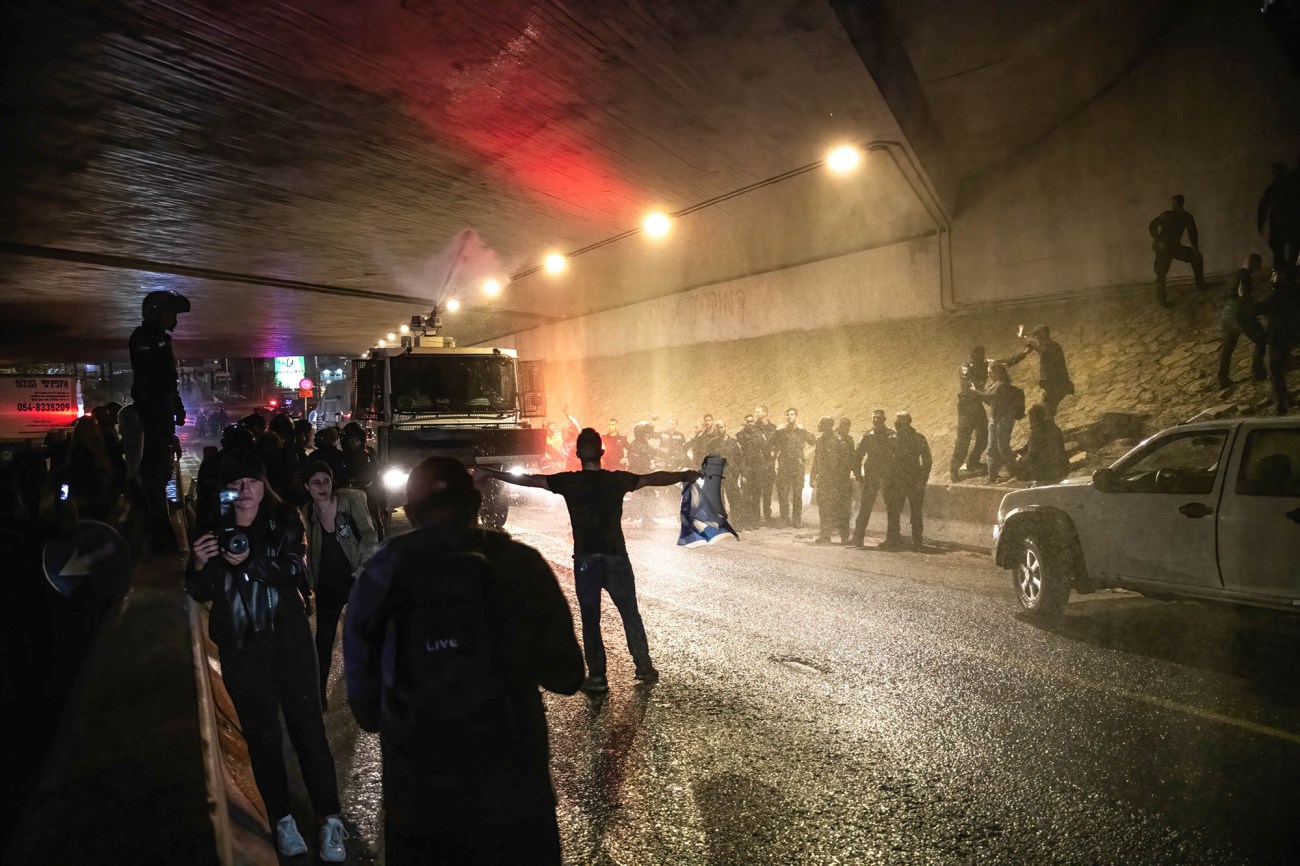
A scene from a “Day of Resistance” that brought out more than 200,000 protesters in Tel Aviv.
Matan Golan/SOPA Images/Zuma

Protesters block traffic on Tel Aviv’s Ayalon Highway on March 9.
Eyal Warshavsky/SOPA Images/Zuma

Protesters stormed the Jerusalem offices of the conservative Kohelet Policy Forum, a think tank that helped spearhead the judicial overhaul.
Ohad Zwigenberg/AP
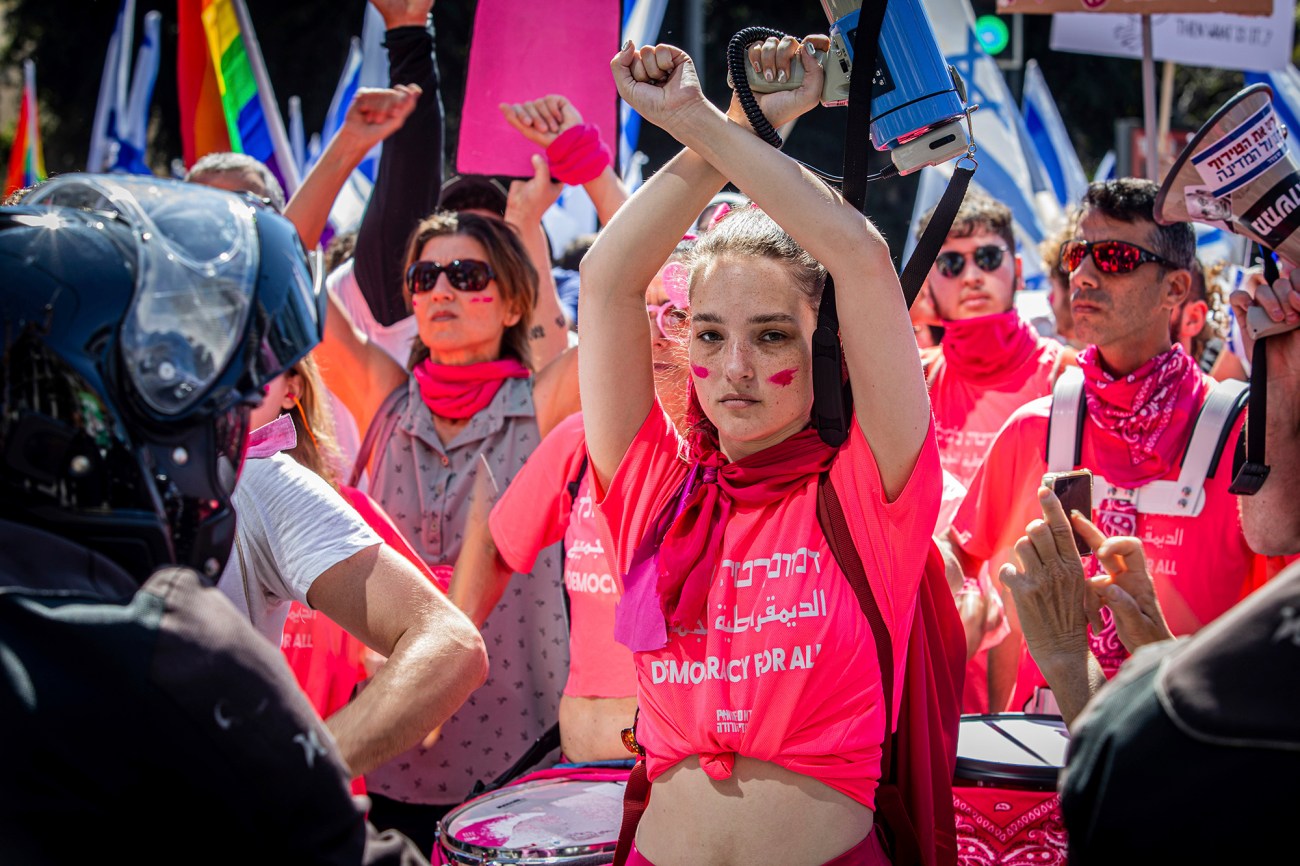
Protestors face off with police on March 9.
Eyal Warshavsky/SOPA Images/Zuma

A night protest during Tel Aviv’s “Day of Resistance.”
Oded Balilty/AP

A pro-democracy rally on March 11.
Eyal Warshavsky/SOPA/Zuma

Women dressed as handmaids from The Handmaid’s Tale to protest the reforms.
Mostafa Alkharouf/Anadolu Agency/Getty
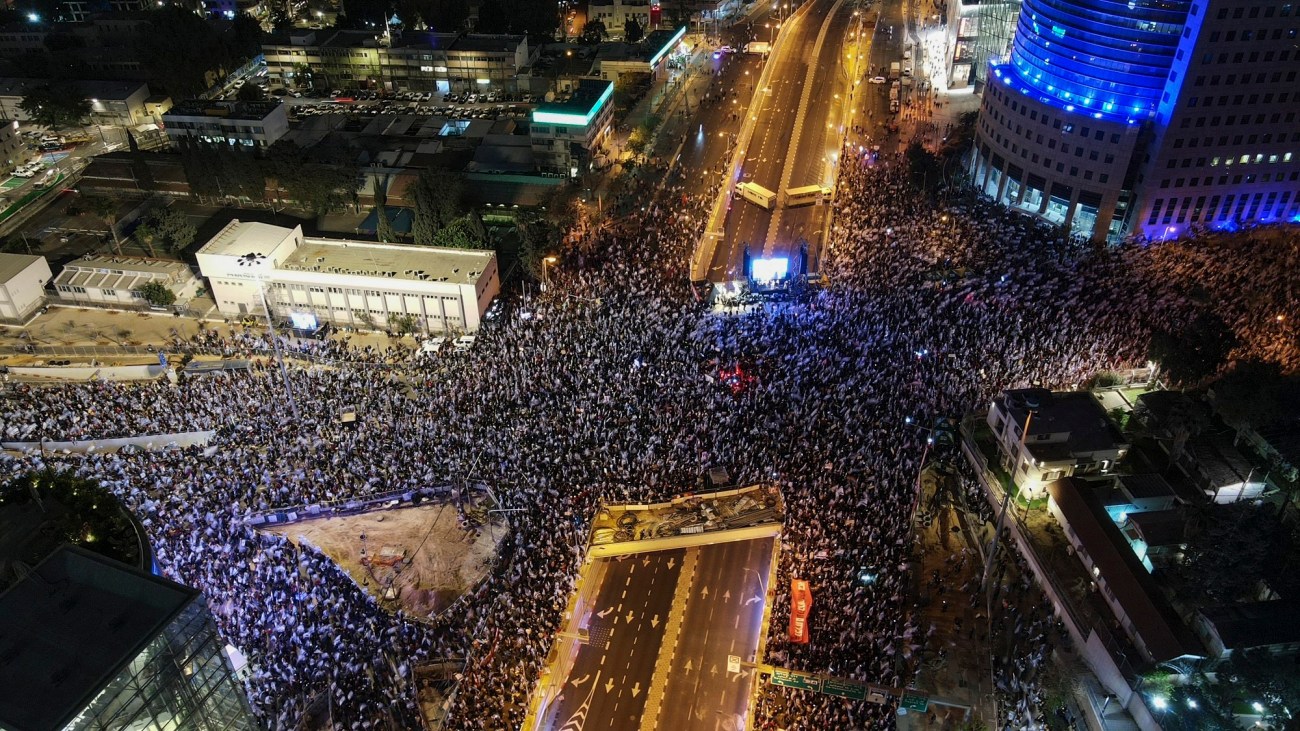
An aerial picture shows the size of protest crowds in Tel Aviv on March 11.
Jack Guez/AFP/Getty
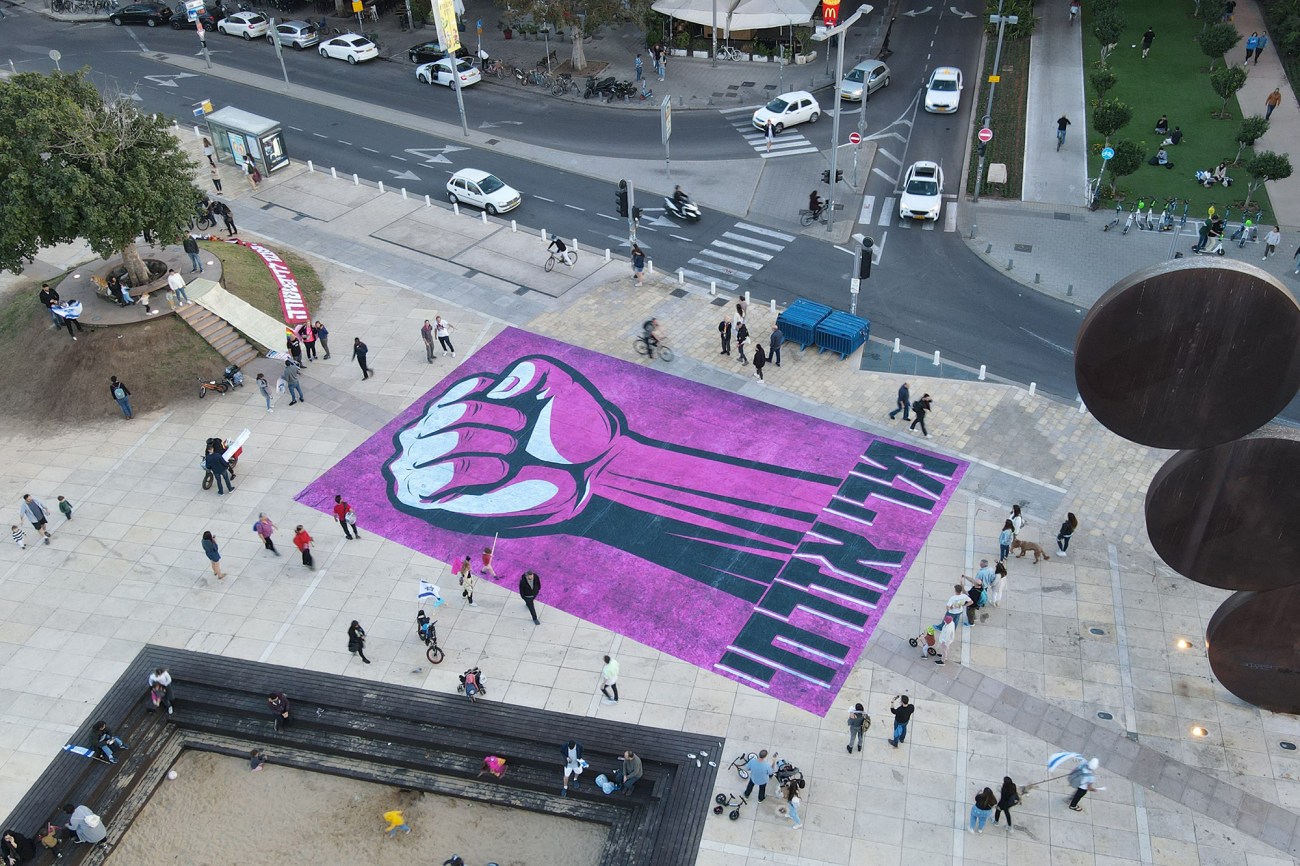
A banner reads “civil disobedience” in Hebrew.
Jack Guez/AFP/Getty

Israeli forces detain a protester in Tel Aviv.
Jack Guez/AFP/Getty

Protesters confront police in Tel Aviv.
Gili Yaari/NurPhoto/Getty

A protest scene on March 4 in Tel Aviv.
Amir Levy/Getty

A nighttime rally on March 4 in Tel Aviv.
Amir Levy/Getty

Mounted police officers clash with protesters in Tel Aviv on March 1.
Amir Levy/Getty

Near the Knesset in Jerusalem on February 20.
Ahmad Gharabli/AFP/Getty

Lawmaker Ron Katz of the Yesh Atid opposition party protests inside the Knesset on February 13.
Yontan Sindel/AFP/Getty

Tens of thousands gather at Tel Aviv’s Habima Square on January 14.
Eyal Warshavsky/SOPA/LightRocket/Getty
